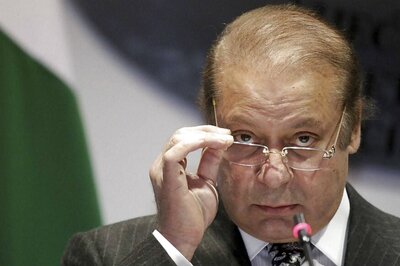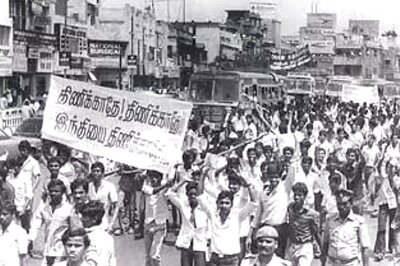
views
Despite ideological differences, the Bharatiya Janata Party (BJP) and Left parties such as the Communist Party of India-Marxist (CPM) and the Communist Party of India (CPI) are the only ones in the country that can claim to have been away from dynasty politics and to have followed the letter and spirit of being democratic parties. The Congress, which is the oldest party in our country, has failed the dynastic test, despite making Mallikarjun Kharge the new party president. The test is about who controls the decision-making.
The Nationalist Congress Party (NCP) drama over Sharad Pawar’s resignation has forced everyone to contemplate the face of dynasty politics. He resigned as president of the NCP on May 2 and took it back on May 5, within three days of his announcement. The reason for the resignation was to give leadership to the younger generation, and the reason to stay is to respect the will of his party workers. From a common man’s perspective, they would be more interested in knowing whether the NCP would transform itself into a true democratic party or would just end up like other parties that have relied on dynasty for transition and survival.
Those who do not believe in dynasty and want talent and hard work to thrive have very few choices. Since the Left is dying a natural death due to ideological incongruity with the national ethos, the BJP remains the only choice. A hard-working person is likely to gain faster recognition in the BJP than in the Congress or other parties which are state-based parties, confined around the charismatic personality of one leader.
People often confront the BJP with dynasty questions, pointing out to sons and daughters of important leaders succeeding in politics because of the influence of their parents. While this may appear to be true in some cases, the decision to nominate them for the party post or elected positions were not taken by their parents. The decision was taken invariably by the leadership taking into account their winning chances. Who decides is important. Also, even the top post in the BJP is open to competition. Nobody knows who would be the next BJP president.
The dilemma Pawar faced is faced by all dynasts, who are genuinely guided by the love of their sons and daughters. Such dynasts are not guided by the larger cause but see the party as a vehicle to amass power and stay in prominence. In a democracy, we have accepted that a more competent person having a larger support base should lead the party. But often, dynasts are foisted at the cost of ignoring the more competent ones. Also, these successors have been groomed to take on leadership when the time comes.
Sharad Pawar’s dilemma is whom to choose as the successor. His daughter Supriya Sule or nephew Ajit Pawar, who reportedly knows the nuts and bolts of the party better. Eventually, Sule may win and the party may witness a split. The NCP in that way is going the Shiv Sena way where the late Balasaheb Thackeray allowed Uddhav Thackeray, who was not much interested in politics, to score over nephew Raj Thackeray who was considered the natural choice to succeed Balasaheb. Raj Thackeray later founded the Maharashtra Navnirman Sena (MNS).
The fate of other regional parties is the same. Either there is a smooth dynastic succession or there is a likely conflict. Successful transitions have taken place in the People’s Democratic Party (PDP), National Conference (NC), Samajwadi Party (SP), Rashtriya Janata Dal (RJD), Dravida Munnetra Kazhagam (DMK), Telangana Rashtriya Samiti (TRS), Jharkhand Mukti Morcha (JMM) aṇḍ the Shiromani Akali Dal (SAD). There are other smaller parties as well with limited caste-based influence.
Mamata Banerjee of the Trinamul Congress (TMC) appears to have chosen her successor in her nephew Abhishek Banerjee. Naveen Patnaik of the Biju Janata Dal (BJD) got the legacy of his father but there may be problems of transition since there is no clear successor. In the RJD, the issue is not settled, though Tejashwi appears to have stolen the march. Unless the transition gets a final stamp within the life-span of Lalu Prasad Yadav, there could be trouble. Nobody knows what will happen to the Bahujan Samaj Party. YS Jagan Mohan Reddy is happy with his ruling in Andhra Pradesh under the party YSR Congress. He used his father’s legacy to form a separate party. Prior to him was the rein of the Telugu Desam Party (TDP) under the leadership of N Chandrababu Naidu who was the son-in-law of NT Rama Rao and won the battle for control over TDP when NTR was alive.
These parties mirror the old system of kings and places where the king’s boundary has become co-terminus with the boundary of the respective state of their influence. These parties have no national vision and are happy talking only about their respective areas of influence. At times, regional aspirations often come in conflict with the national aspiration.
A party like the BJP is a threat to their existence since a party with a national vision will always have more appeal to an average Indian who wants to see the country strong. This explains why these regional parties, barring some, would prefer to gang up and put a check on the BJP juggernaut. They are happy if they are able to retain their turf.
The writer is the convener of the media relations department of the BJP and represents the party as a spokesperson on TV debates. He has authored the book ‘Narendra Modi: The Game Changer’. The views expressed are personal.
Read all the Latest Opinions here




















Comments
0 comment